Batoidea
Here's where things get interesting! Batoids have ventral (bottom) gill openings, dorsal (top) eyes, and the pectoral fins are fused to their head! They have an extremely derived and recognizable shape, mainly because there are not many other fish that are flattened.
Torpediniformes: Electric Rays
This group of fishes is best known for their electrogenic abilities. These rays generate their electricity by modified muscles on either side of the head, which can generate electricity in a similar way to a battery. The organs contain many columns, each with hundreds of discs filled with a gelatinous substance. The ray can send a nerve impulse to the organs, discharging the columns and generating a voltage. Most rays swim with their pectoral fins, but the electric rays propel themselves with their tails.
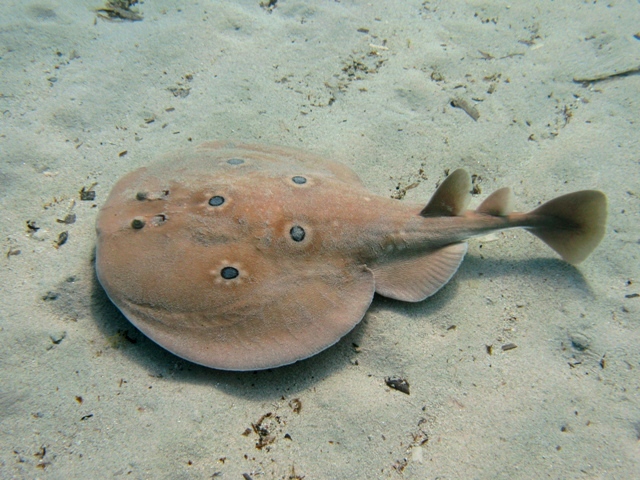
Torpedinidae: Torpedo Electric Rays
This family contains two genera, Hypnos and Torpedo. The Coffin Ray, Hypnos monopterygius, has a very short tail compared to the rest of its body, giving it a pear shape. The genus Torpedo has a longer tail and a more rounded body.
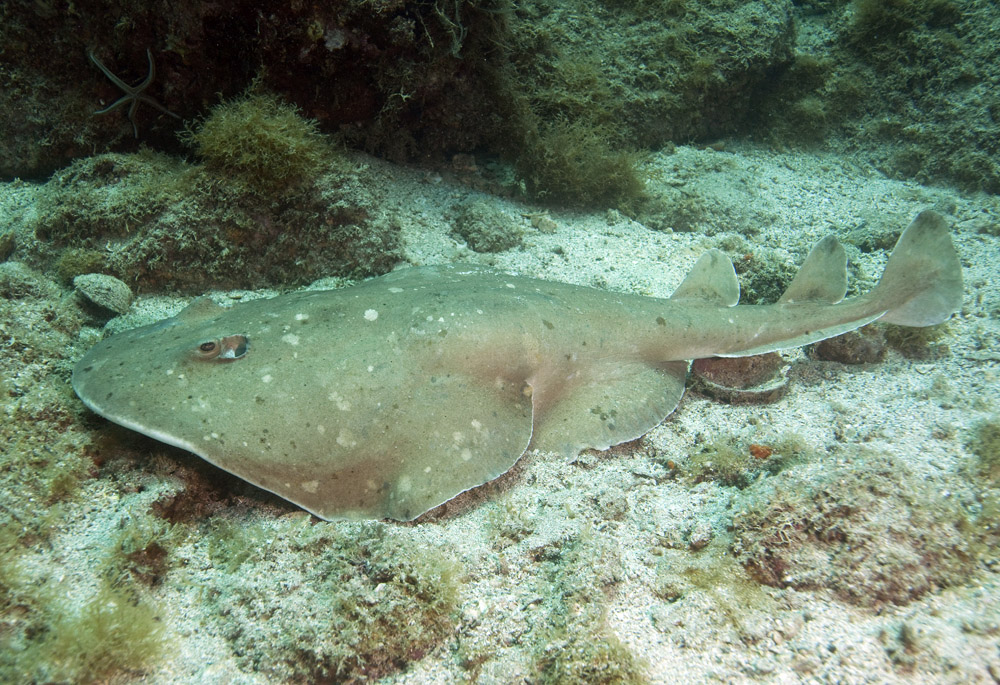
Narcinidae: Numbfishes
This family does not generate as strong an electric charge as Torpedinidae.
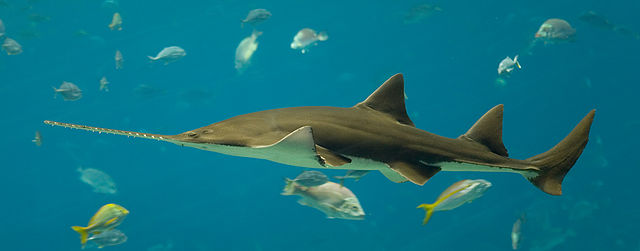
"Pristis pectinata - Georgia Aquarium Jan 2006" by Diliff - Own work. Licensed under Creative Commons Attribution 2.5 via Wikimedia Commons
Pristiformes: Sawfishes
This order contains one family (Pristidae) and two genera. This group is characterized by ventral gills slits, dorsal spiracles, and most obviously, an elongated, flattened rostrum. The sawfish rostrum is much longer than the sawshark rostrum, and has symmetrical teeth (the left side is a mirror image of the right side). These teeth are firmly lodged into sockets in the rostrum. The saw is used to sift through the mud for prey, or can be used to slash at prey swimming by, to either stun or kill.
Rajiformes: Skates
These fish have pointed pectoral fins, and an either diamond or elongate body. They all lay eggs.

Rhinidae: Bowmouth Guitarfishes
There is only one species, Rhina ancylostoma. This fish is much less flattened than its relatives, and has a body plan intermediate between sharks and rays. There is a ridge of enlarged scales running down the midline, and the caudal fin is much larger than in other rays.
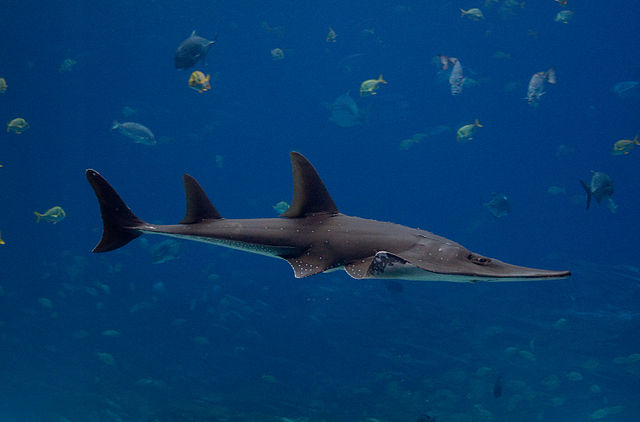
"Giant guitarfish (Rhynchobatus djiddensis)" by Brian Gratwicke - Flickr: Giant guitarfish (Rhynchobatus djiddensis). Licensed under Creative Commons Attribution 2.0 via Wikimedia Commons
Rhynchobatidae: Wedgefishes
This family contains only one genus, Rynchobatus. These fishes are similar in shape to guitarfishes, although they have a thicker body, more like a sawfish (without the saw). This group includes the poorly named Giant Guitarfish, Rynchobatus djiddensis.
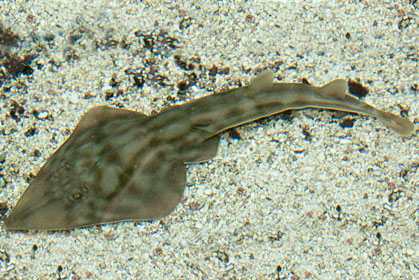
Rhinobatidae: Guitarfishes
This family is appropriately named due to the shape of its body. The body plan is considered an intermediate between sharks and rays, because of the long, shark-like tail and the pointed shape of the head. There are two dorsal fins, which are also large like a shark.

Rajidae: Skates
One of the larger families of rays. They are often confused with stingrays, as both are common groups. However, skates have more pointed pectoral fins, pelvic fins with two lobes, and lack the stinger that gives stingrays their name.
Myliobatiformes: Stingrays
There is not much that connects all of these families, but you may find some interesting individuals in each one! All families except Platyrhinidae and Zanobatidae are members of Myliobatoidei, and all have an elongated, modified dermal denticle on their tails, known as the stinger.
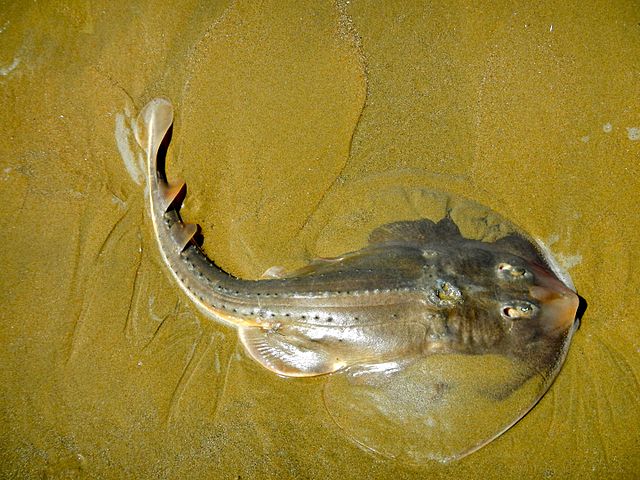
"Platyrhinoidis triseriata pismo" by PunkToad from oakland, us - Lesser Electric Ray. Licensed under Creative Commons Attribution 2.0 via Wikimedia Commons
Platyrhinidae: Thornbacks
These rays may look similar to guitarfishes, but are more closely related to stingrays. The body is rounded with a slightly pointed snout, but the tail is long and muscular like a guitarfish or shark.
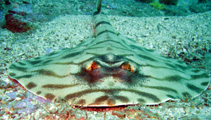
Zanobatidae: Panrays
There is only one species, Zanobatus schoenleinii. That's pretty much all I know. I'm goig to make an educated guess, and say that it is striped.
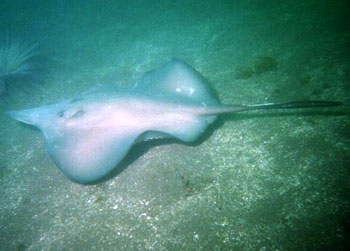
Hexatrygonidae: Sixgill Stingrays
There is only one species, Hexatrygon bickelli. The most obvious characteristic is the presence of six gill slits (hence the name). This ray has an extremely long and pointed snout, and its pectoral fins curve in the back, giving it an ice-cream cone shape (with the tail coming off the top of the scoop). The snout is filled with a gelatinous substance, whose purpose does not seem to be well described.

"Plesiobatis daviesi cochin" by Bineesh. K. K - http://www.fishbase.org/photos/thumbnailssummary.php?ID=7376#. Licensed under Creative Commons Attribution 3.0 via Wikimedia Commons
Plesiobatidae: Deepwater Stingrays
There is only one species, Plesiobatis daviesi. Its disc is leaf-shaped, and it also has a leaf-shaped caudal fin lobe.
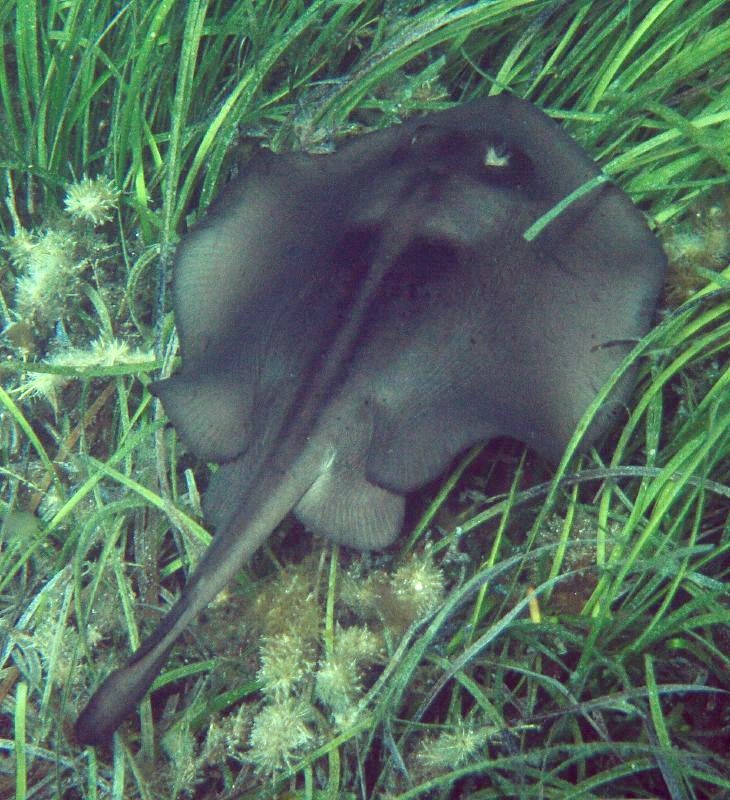
Urolophidae: Round Stingrays
These fish are sometimes known as "stingarees," which is kind of awesome. Therefore, I will write no more about them.
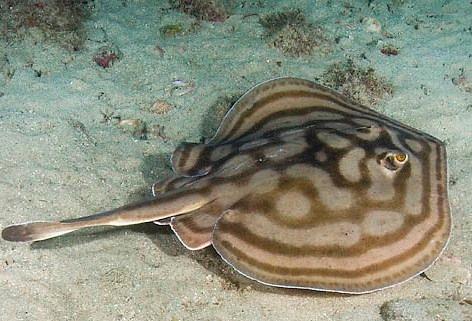
Urotrygonidae: American Round Stingrays
This group includes the Yellow Stingray, Urobatis jamaicensis, which is commonly found in the Caribbean. It does stingray things, like frolicking on the seafloor and hunting for treats buried in the sand.
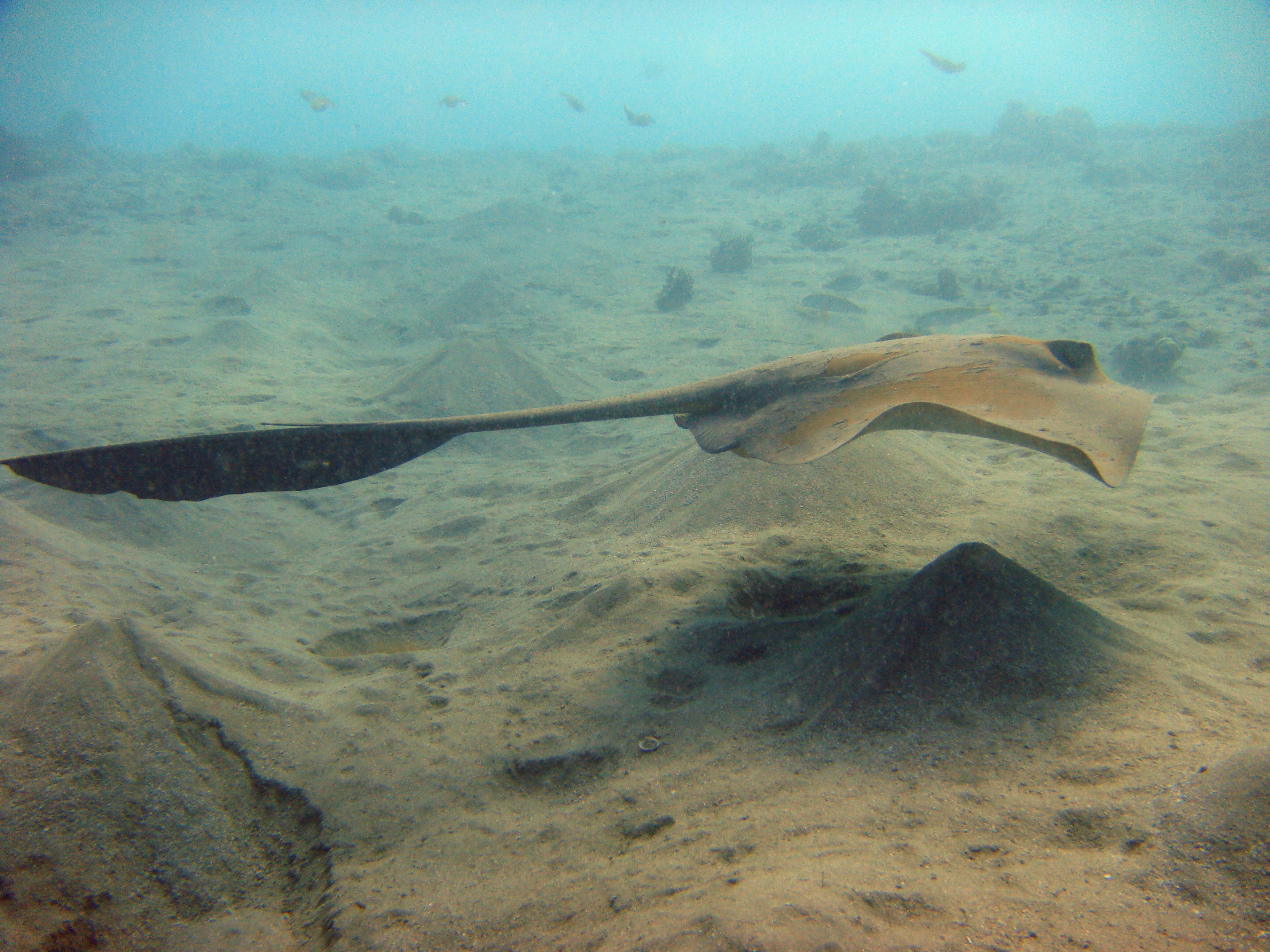
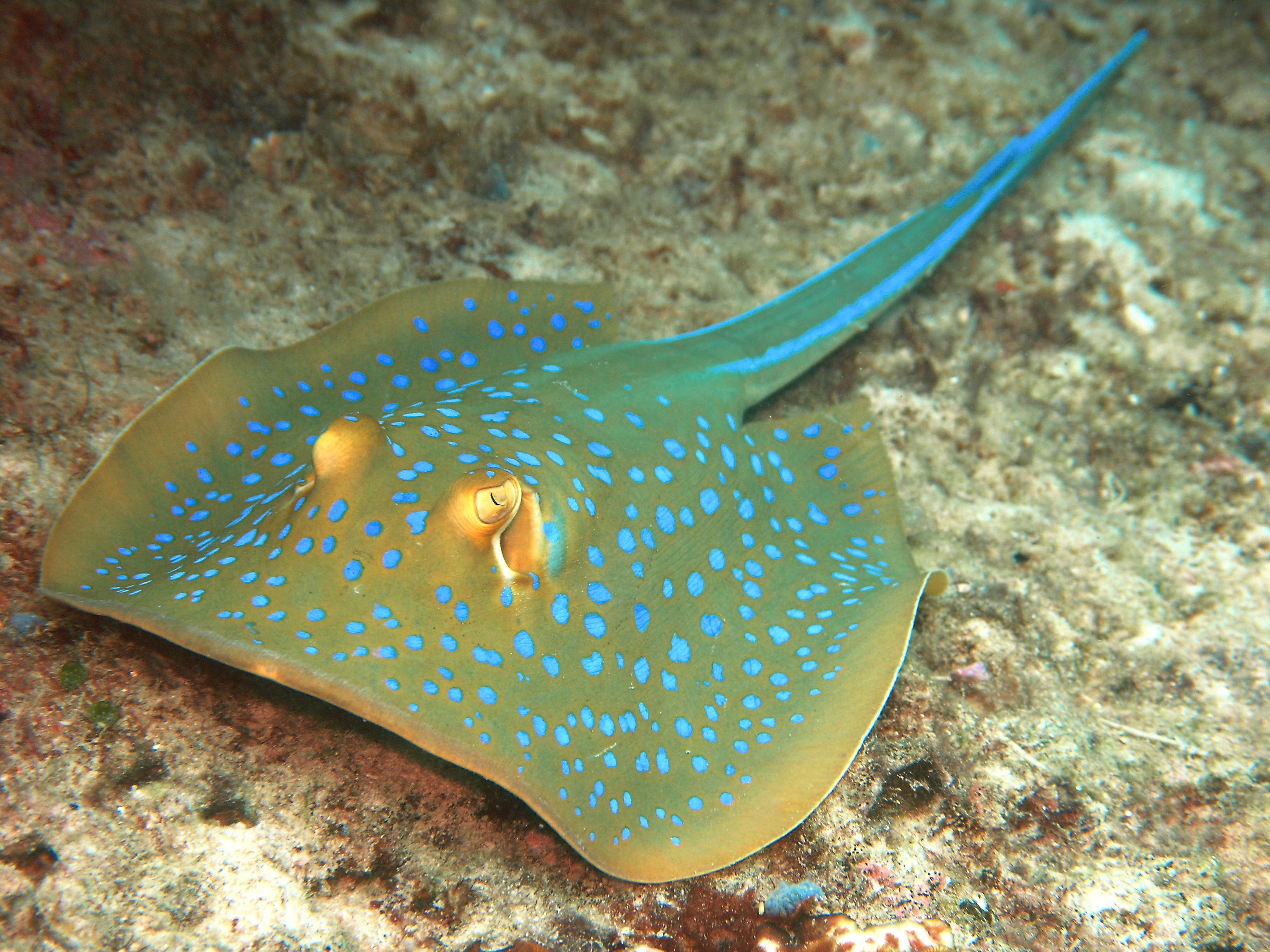
Dasyatidae: Whiptail Stingrays
This family has a few different interesting members. Shall we take a look?
- Southern Stingray (Dasyatis americana): This ray has very pointed pectoral fins, and you can even hold them in the Caymans at Stingray City!
- Giant Freshwater Whipray (Himantura polylepis): This species is one of the largest freshwater fish species known, reaching over 600kg, and a stinger over 35cm long
- Neotrygon: This genus is characterized by a dark band across the eyes (like a mask!), and includes the Ningaloo maskray, which is an awesome name
- Cowtail Stingray (Pastinachus sephen): This ray has a large ventral fold in its tail, which is viewable when it is swimming above the bottom
- Pelagic Stingray (Pteroplatytrygon violacea): Characterized by a wedge-shaped disc that is wider than it is long, it swims with a flapping motion, not undulating like other rays
- Bluespotted Ribbontail Ray (Taeniura lymma): A very recognizable species, it is green with bright blue spots on its back
- Porcupine Ray (Urogymnus asperrimus): This ray is named due to the presence of many sharp thorns protruding from its back, but it is unique in lacking a stinger
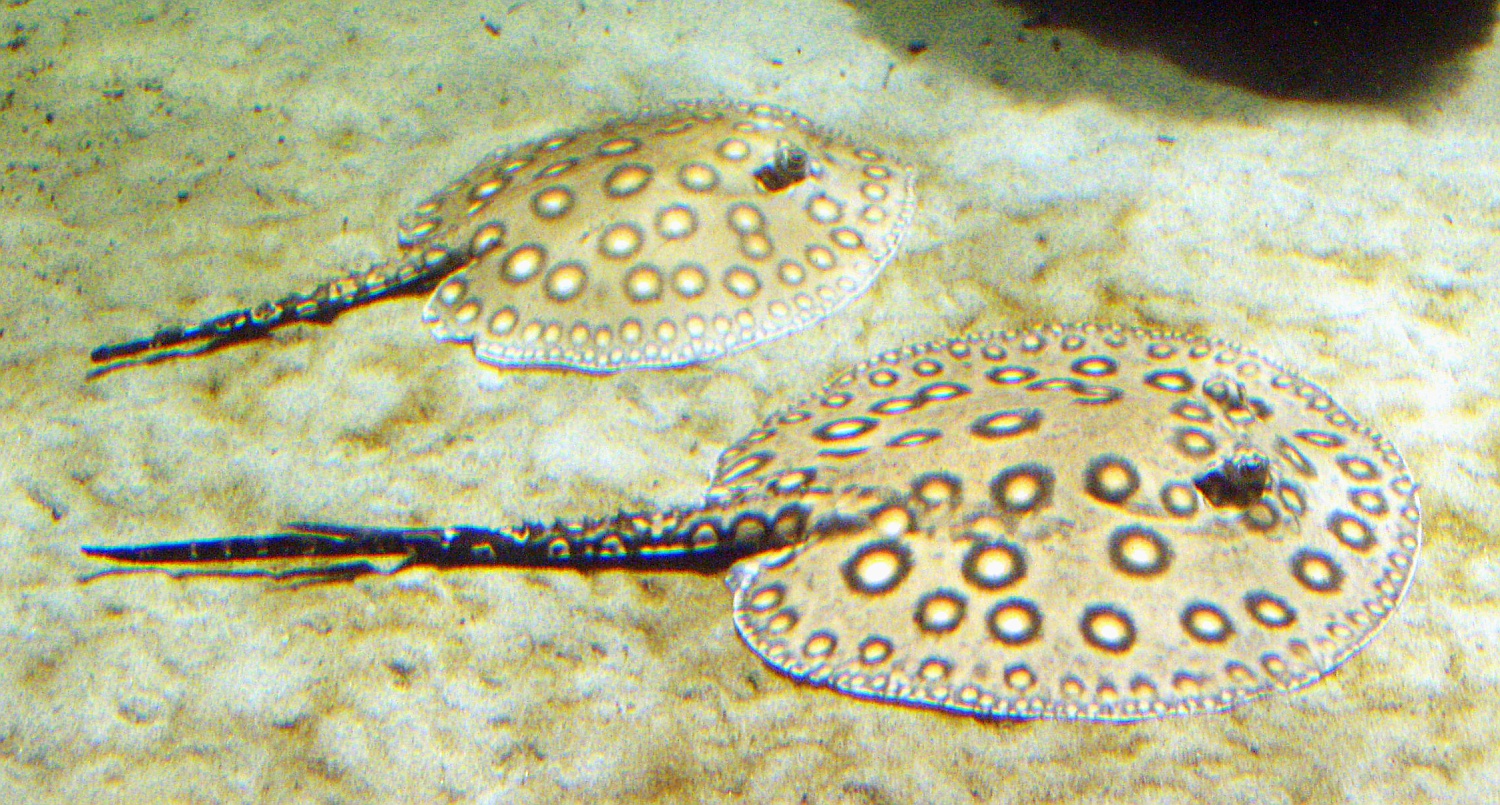
Potamotrygonidae: River Stingrays
These stingrays are very circular in shape. They are greatly feared in South America due to their stingers.
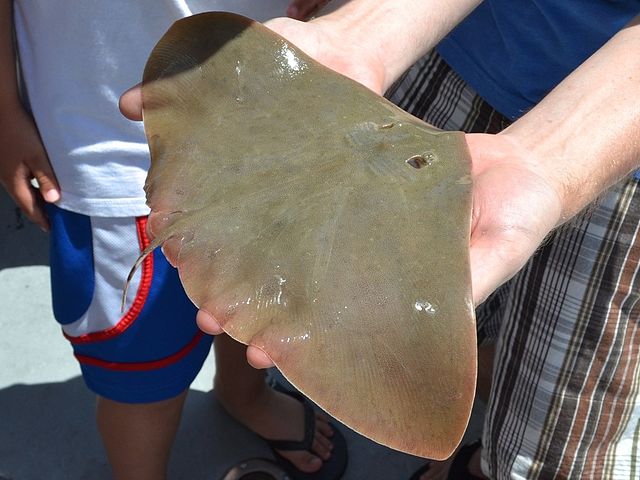
"Gymnura micrura" by Sean Loyless from Austin, USA - Manta ray. Licensed under Creative Commons Attribution 2.0 via Wikimedia Commons
Gymnuridae: Butterfly Rays
These rays are characterized by a broad disc with pointed pectoral fins, almost like a strangly pointed oval.
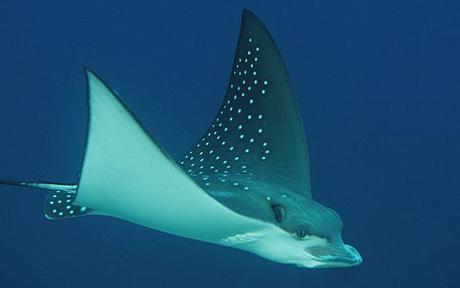
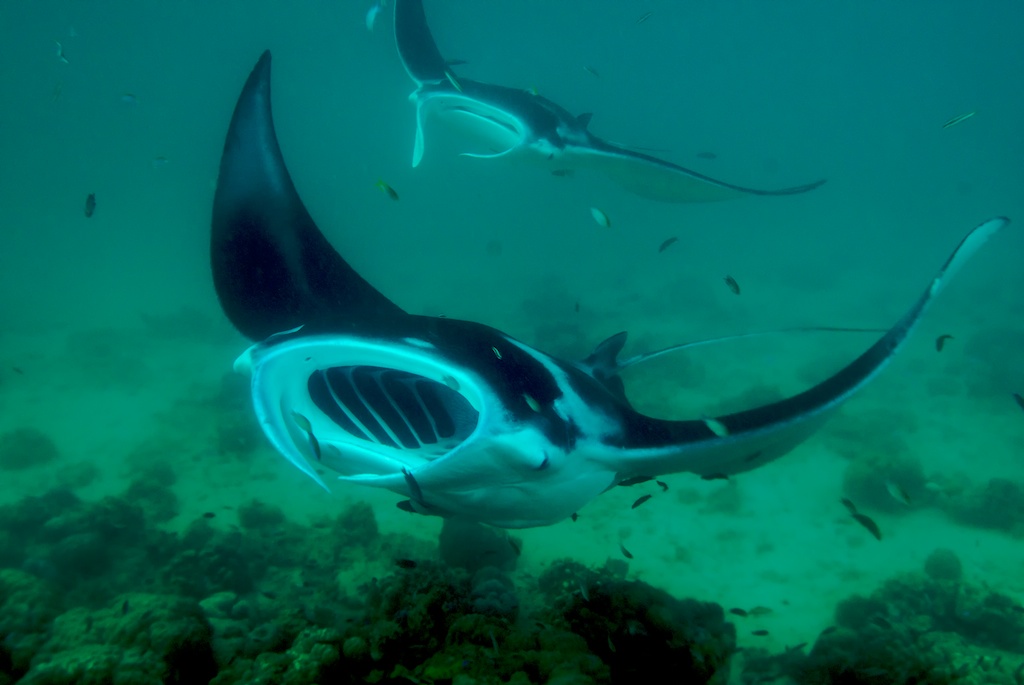
Myliobatidae: Eagle Rays
This family tends to be pelagic as opposed to benthic. The pectoral fins are long and pointed, and are slightly curved backwards.
- Spotted Eagle Ray (Aetobatus narinari): Is can be identified by its dark dorsal coloration with white spots, and its flat, pointed snout
- Bat Ray (Myliobatis californica): It might not be the savior of Gotham Reef, but its darkish coloration and flattened snout make it the perfect contender for the job
- Bull Ray (Pteromylaeus bovinus): Continuing the animal trend, it is named because its stout head is similar to that of a bull's...not like any bull I've seen
- Cownose Ray (Rhinoptera bonasus): The female companion to the Bull Ray (just kidding), its head is split into two rounded lobes, making it easily recognizable
- Giant Oceanic Manta Ray (Manta birostris): The largest ray in the world, it lacks a stinger, but holds the distinction of being the only vertebrate with three pairs of limbs (pectoral fins, pelvic fins, and cephalic fins at the front of the head, used for funneling food towards the terminal mouth)
- Giant Devil Ray (Mobula mobular): Similar to manta rays (Manta), devil rays (Mobula) have pointier fins, smaller size, and have a subterminal mouth (it is underneath the head, not at the front of the body)